
FRAGMENTS
FRAGMENTS of ruined architecture and construction sites simultaneously, the delicately collapsing and elaborately erected Made in Ruins & Seat […] stand as if caught in time. As both staircase and superstructure, chair and classical portico, ruin and construction site, the works exist in a state of spatial and temporal suspension.
The misfits will not be pinned down. The oversized dimensions and shifting scales of the staircase fragment refuse an easy and predictable relationship with your legs. The chair defends itself against your weight. Beneath the works’ surfaces lie architectural worlds, suggesting an ambiguity of scale and a vulnerable relationship between the work’s bold outer surfaces and the fragile inner constructions that support them.
A R T I S T
“The Koepping glasses are fragile to the point that they threaten to shatter at the slightest contact with human fingers. This means that they are to all intents and purposes dysfunctional, but for us this dysfunctional character seems more than accidental. On the one hand it’s a kitsch and showy way of pursuing crafting finesse to the point of absurdity. On the other, it’s as an extreme development of an archetypical quality of any glass – its fragility. Made in Ruins and Seat on the Edge both call on our capacities to project ruin and incompletion onto our own bodies. These qualities are easy to associate with frailty, and our bodies’ innevitable decay and disintegration. But, unlike the glasses, our bodies are busy construction sites that keep picking up the pieces and rebuilding themselves.”
M U S E U M
“Karl Koepping’s ornamental glasses are in pieces. The soaring hubris of the exquisite flowers has met its nemesis in a brittle wilting. Unable to keep their promise of delicate fragility, the shattered remains now serve only as reminders of frustrated expectations and high hopes dashed. Or do they? As Made in Ruins & Seat on the Edge touch on the concepts of ruin and fragmentation in a brash and bold manner so the Koepping glasses defy us to pity them. Their triumph consists in having even been here to shatter at all. We were perfect, they seem to exclaim, and you missed it. So we are left to imagine them in their splendour, to create something meaningful from the surviving fragments. And we inevitably get it wrong. To surmise a kingdom from a coin or a house from the rotten remains of a doorpost is all we can do.”
“And then there are those fabulous glass legs. Unrealized in 1998 […] they form the basis for a grandiose Cinderella story in which a romantic prince looks for an ideal woman with just the right legs (or lack of them) so he can outdo previous narrative heroes and their glass slippers with something bigger and better. But the prince is also a prosthetist – revealing both his and the imagined prosthetics confused substrate of desire and fear. That is, the very physical and social wish to achieve transparency [entails] the latent awareness of the awful fragility of glass.”
VIVIAN SOBCHACK
A R T E F A C T D E T A I L S
Ornamental Floral Glasses
(1896)
Heights varying between 20cm-31cm
Coloured glass
Ornamental glasses in form of long-stemmed, cup-shaped flowers with two leaves. In shattered and faded condition.
These ornamental floral glasses were designed in 1896 by Karl Koepping, a professor of the Prussian Academy of Art in Berlin. The skilled glassworkers of Ilmenau in Thuringia, whose names sadly were never recorded, carried out the actual production. Of the dozen glasses the museum ordered, one was already broken on arrival. The museum still preserves the pieces of it and of the others that have shattered over the years. The glasses are created using the lampworking technique known since antiquity, but made famous by the artisans of Murano. Koepping found inspiration for the shapes and colours of the glasses in Venetian glasswork and the frailness and nuance of Eastern crafts, of which his friend Samuel Bing had a famous collection. Bing opened the Maison d’Art Nouveau in Paris in 1895 thereby giving this new artistic current the name by which it was to become known. This new style, of which the glasses are perfect examples, was characterised by exaggerated elegance, fantastic elaborations and amendments of nature’s forms.
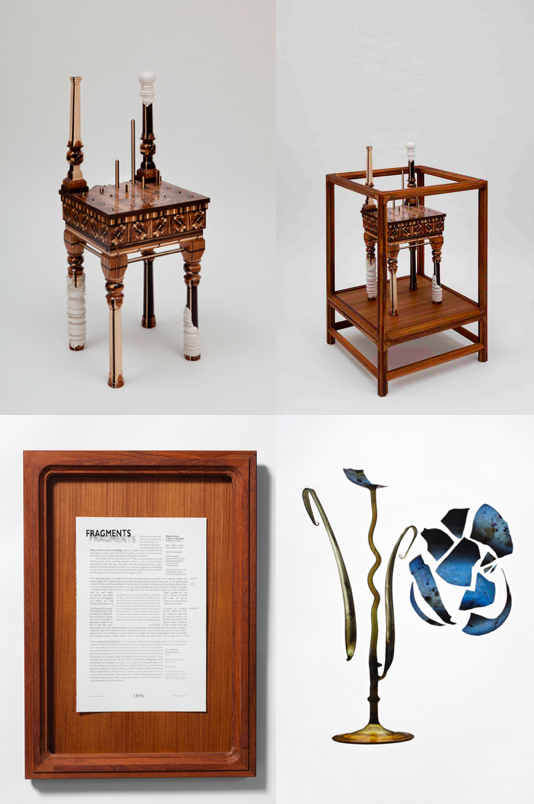
Seat […]
2009
Artwork ; Teak vitrine ; Framed text ; Diasec print
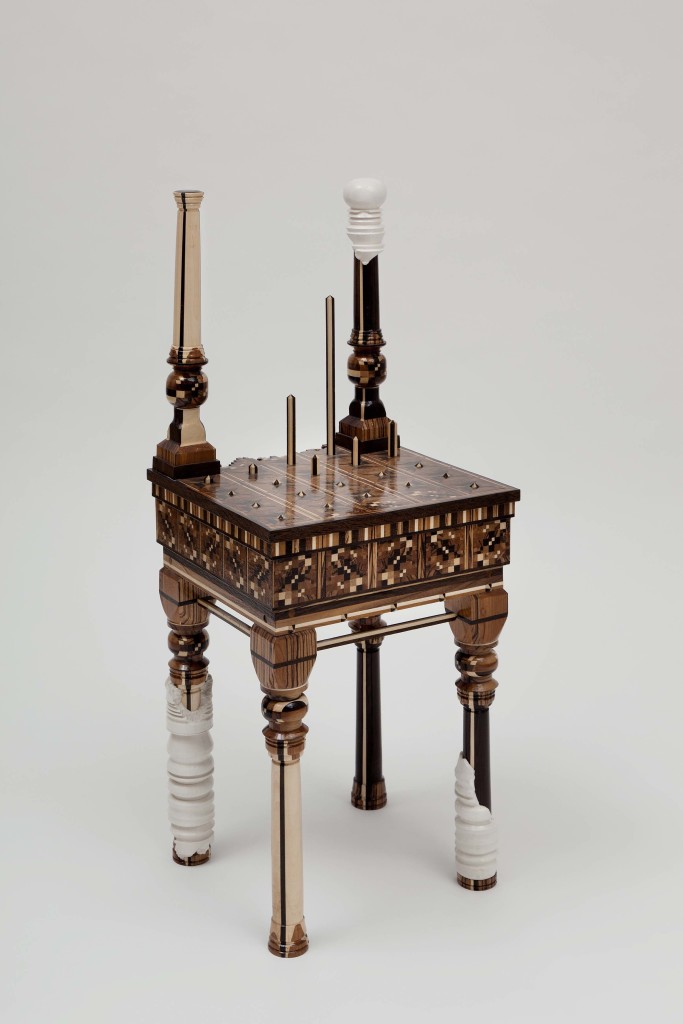
Seat […]
2009
Various woods, plaster
50 x 50 x 120 cm
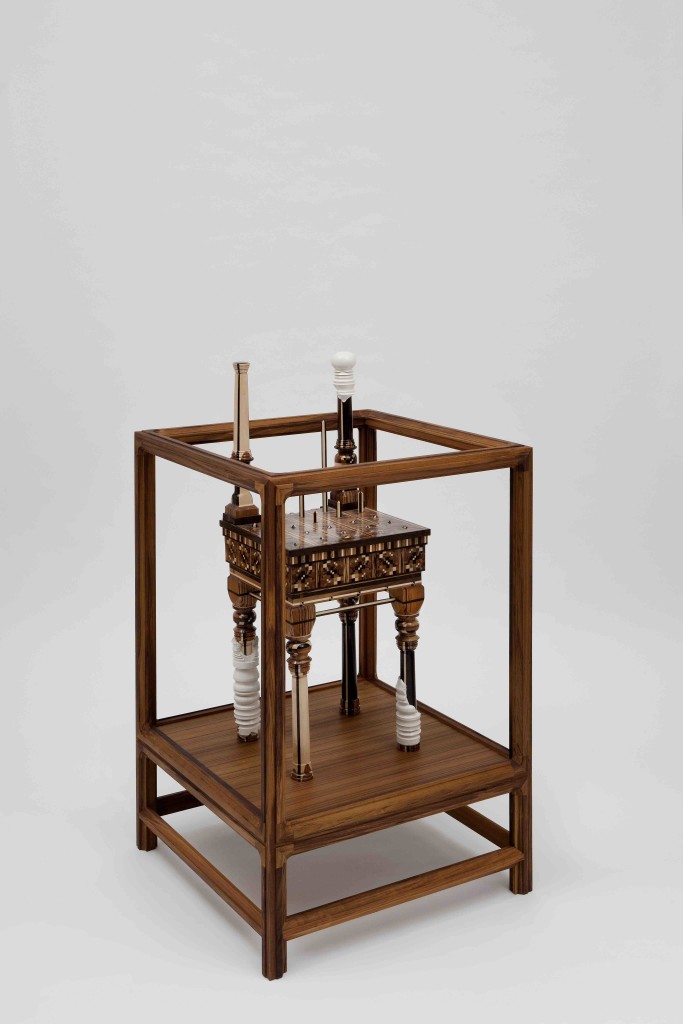
Seat […]
2009
Teak vitrine
73 x 73 x 110 cm
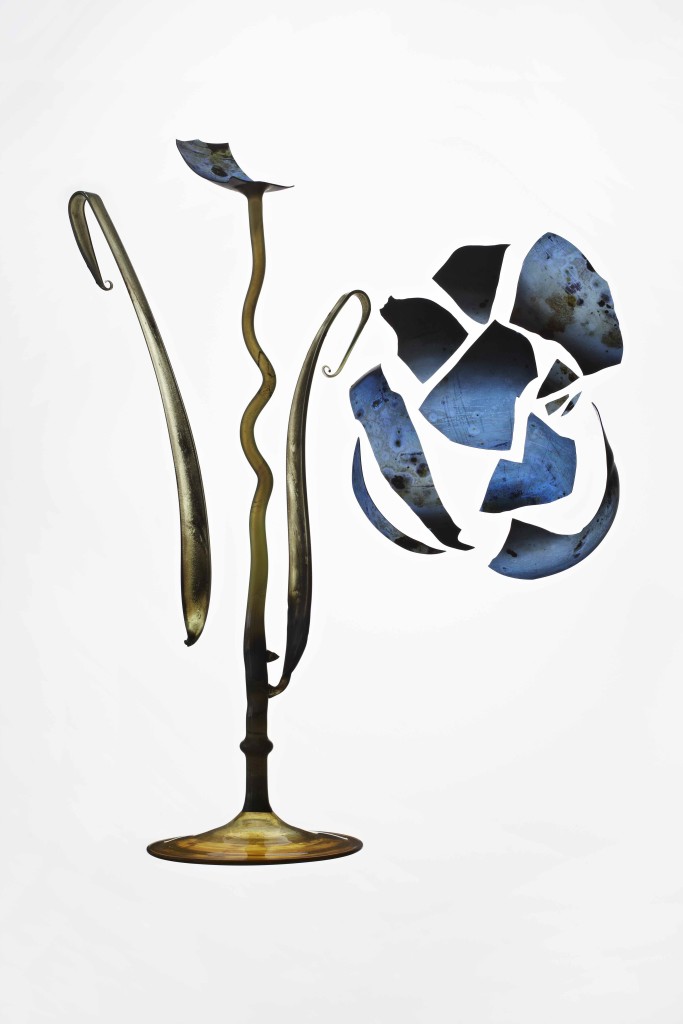
Seat […]
2009 – 2011
Karl Koepping Ornamental Floral Glasses
Diasec print
68 x 48 x 3 cm
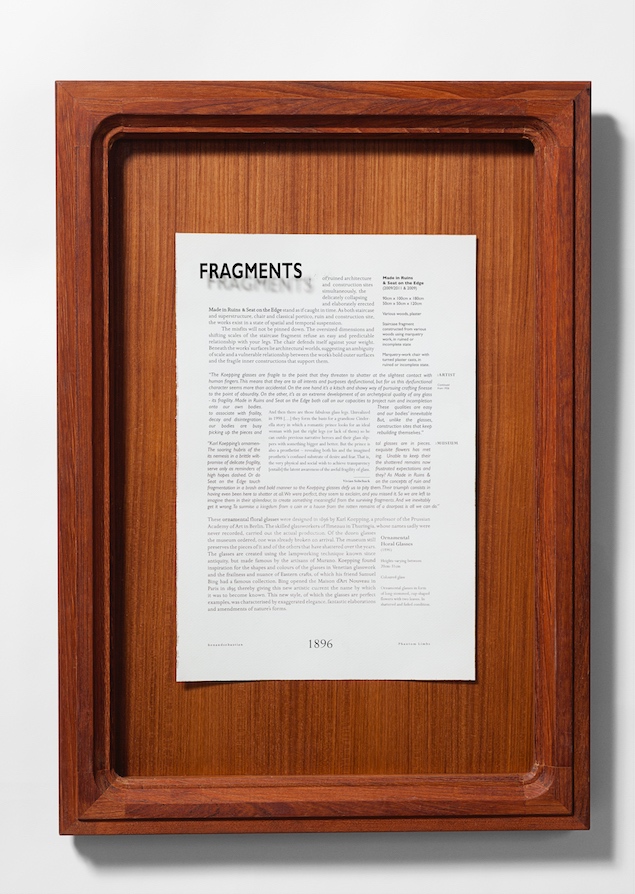
Seat […]
2009
Fragments
Framed text
68 x 48 x 5 cm

Seat […]
2009
Fragments detail

Seat […]
2009
Artwork detail
Various woods, plaster
50 x 50 x 120 cm

Seat […]
2009
Artwork detail
Various woods, plaster
50 x 50 x 120 cm


‘The work of the collaborative artist practice, benandsebastian, teeters on a cusp between designed physicality and intangible theories of the mind. Trained in architecture and theoretically versed, their sculptures take on elaborate mechanics and boast intricate detailing, yet speak to vast philosophical and sociological systems. It is impossible to concretely anchor their work, an elusiveness made evident in their recent exhibition at the Designmuseum Danmark, ‘Phantom Limbs’.
Embedded directly within the permanent collection and specifically paired with unexpected inventory from Copenhagen’s Medical Museum, National Museum and the attics of Designmuseum Danmark, their work becomes not only the sculptures on display, but the myriad relationships made between context and object, between body and limb. Evoking the medical sense of phantom limbs, where an amputee still feels the presence of the absent limb, benandsebastian navigate the museum context and call into question the assumed wholeness we expect, perceive and viscerally feel.’
Cassandra Edlefsen Lasch,
independent curator, DAMn magazine, issue 33


